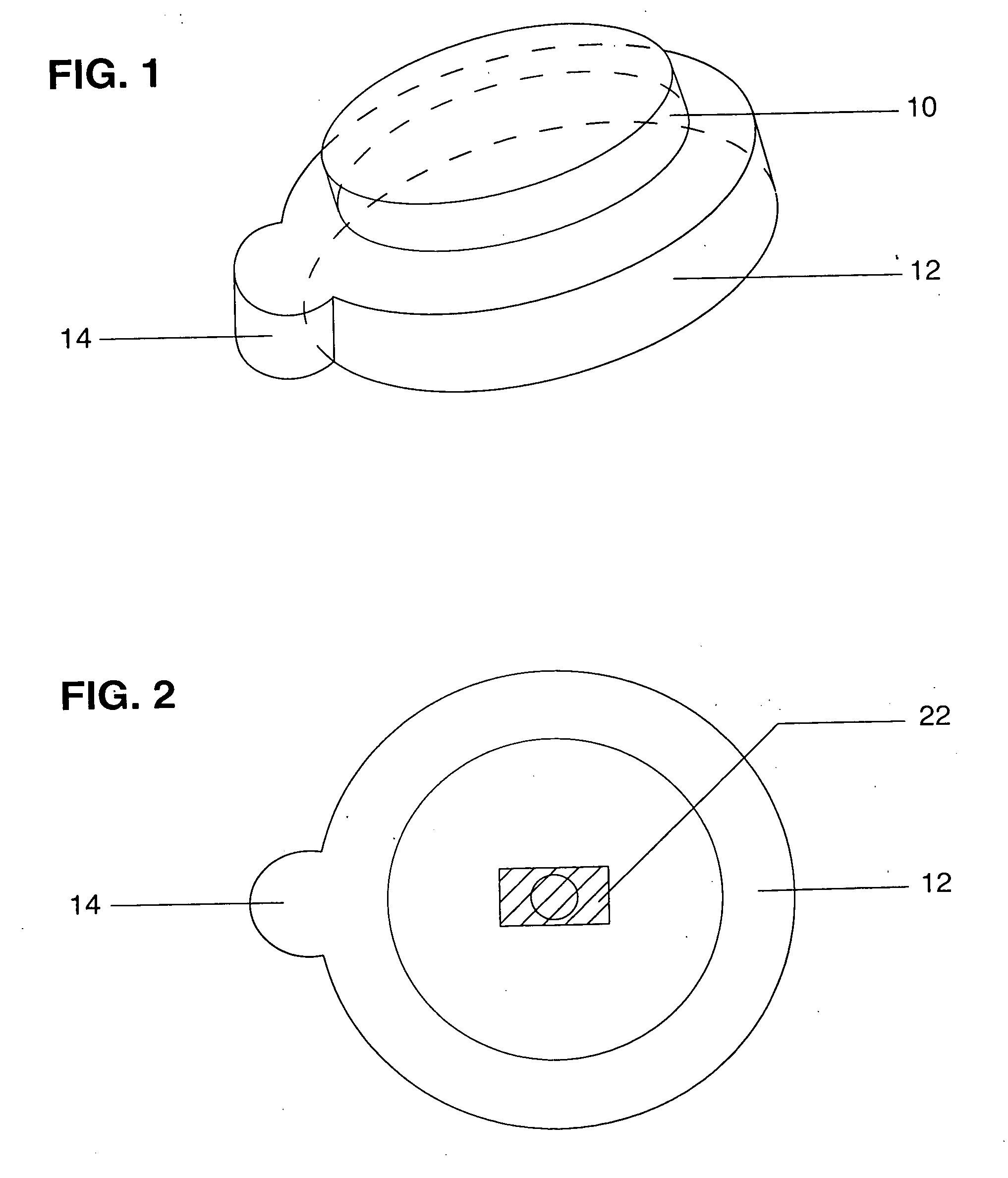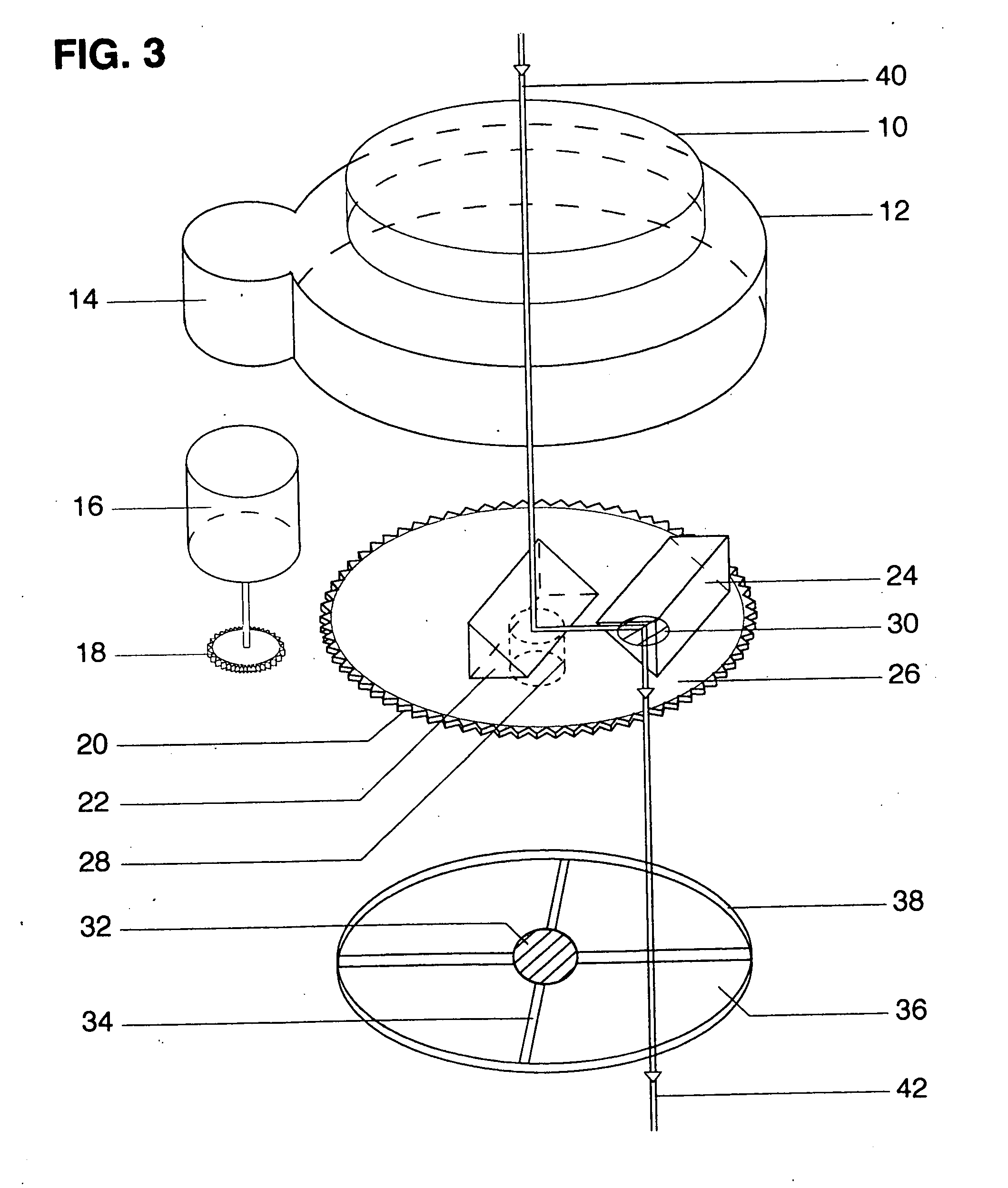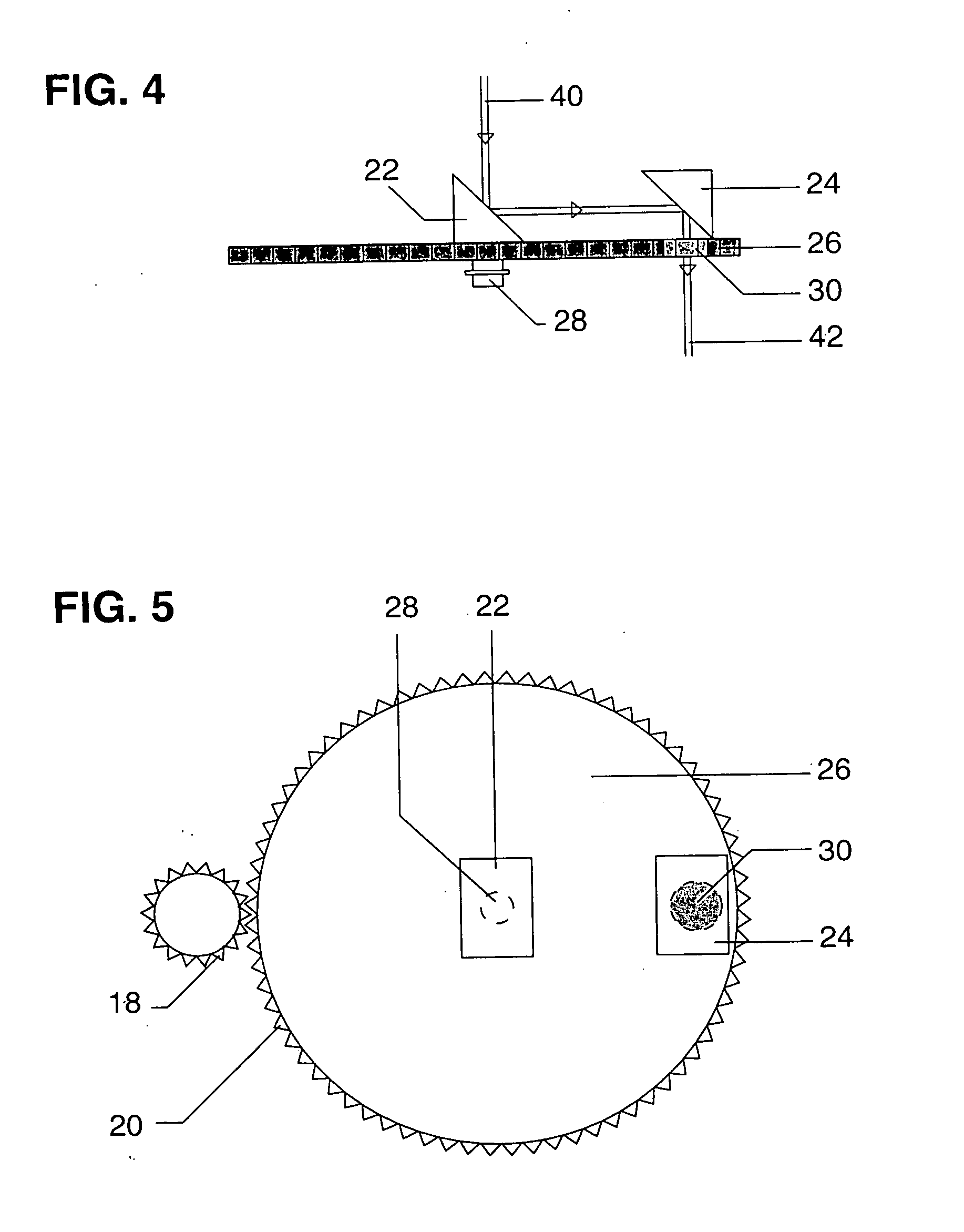Automated panretinal laser photocoagulation
a panretinal and laser technology, applied in the field of ophthalmic devices, can solve the problems of manual treatment with a significant degree of operator dexterity, significant health problems, and impaired vision,
- Summary
- Abstract
- Description
- Claims
- Application Information
AI Technical Summary
Problems solved by technology
Method used
Image
Examples
Embodiment Construction
—PREFERRED EMBODIMENT—FIGS. 1-10
[0060] A preferred embodiment of the invention is shown in FIG. 1-10. The external housing of the laser adaptor is seen in FIG. 1 in a lateral view with the instrument tilted obliquely. Two annular rings are mounted in apposition with the top portion having a smaller diameter. The top ring contains a threaded edge 10 for mounting or screwing into the lens assembly in a laser delivery device. The external casing 12 of the lower ring contains an additional enclosure for the motor casing 14. A top view of the device's configuration is seen in FIG. 2 again showing casing 12 and 14. In addition, a central mirror 22 or prism is mounted internally within the instrument to divert the path of an incoming laser beam. FIG. 3 is an exploded view of the device showing its external and internal construction in detail. Within the casing of the laser instrument adaptor two discs and a micromotor are found. The first and superior plate is a rotary disc 26 that has two...
PUM
 Login to View More
Login to View More Abstract
Description
Claims
Application Information
 Login to View More
Login to View More - R&D
- Intellectual Property
- Life Sciences
- Materials
- Tech Scout
- Unparalleled Data Quality
- Higher Quality Content
- 60% Fewer Hallucinations
Browse by: Latest US Patents, China's latest patents, Technical Efficacy Thesaurus, Application Domain, Technology Topic, Popular Technical Reports.
© 2025 PatSnap. All rights reserved.Legal|Privacy policy|Modern Slavery Act Transparency Statement|Sitemap|About US| Contact US: help@patsnap.com



